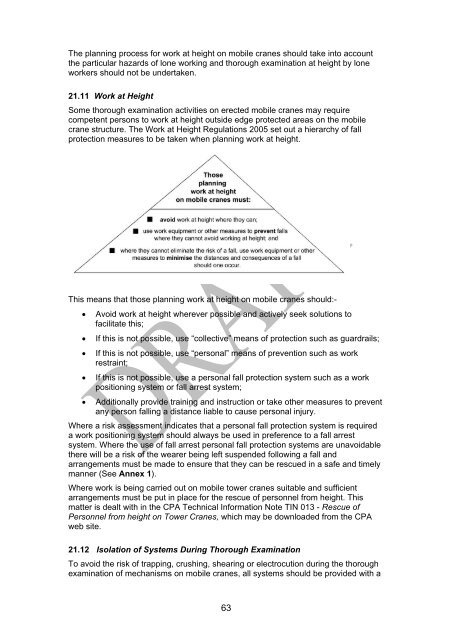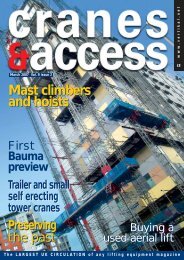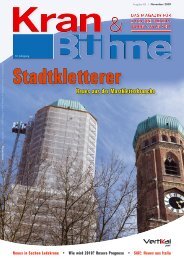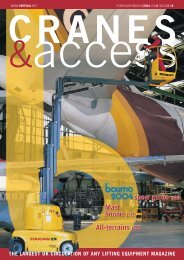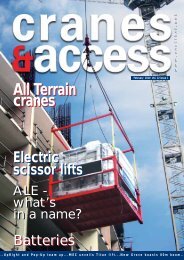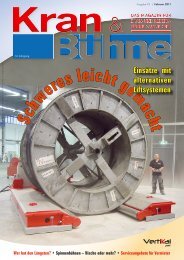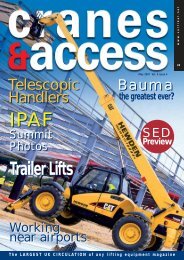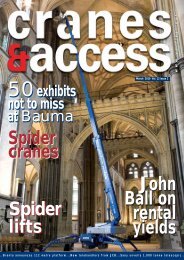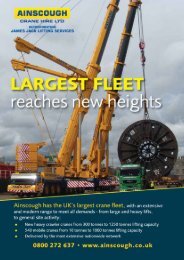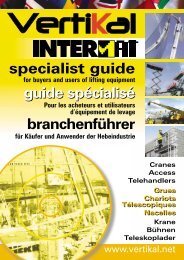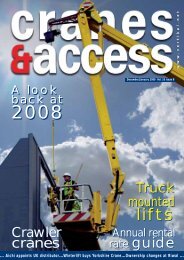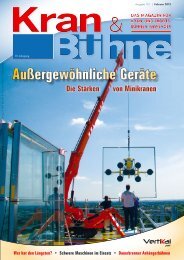Maintenance, Inspection and Thorough Examination of Mobile Cranes
Maintenance, Inspection and Thorough Examination of Mobile Cranes
Maintenance, Inspection and Thorough Examination of Mobile Cranes
You also want an ePaper? Increase the reach of your titles
YUMPU automatically turns print PDFs into web optimized ePapers that Google loves.
The planning process for work at height on mobile cranes should take into account<br />
the particular hazards <strong>of</strong> lone working <strong>and</strong> thorough examination at height by lone<br />
workers should not be undertaken.<br />
21.11 Work at Height<br />
Some thorough examination activities on erected mobile cranes may require<br />
competent persons to work at height outside edge protected areas on the mobile<br />
crane structure. The Work at Height Regulations 2005 set out a hierarchy <strong>of</strong> fall<br />
protection measures to be taken when planning work at height.<br />
This means that those planning work at height on mobile cranes should:-<br />
� Avoid work at height wherever possible <strong>and</strong> actively seek solutions to<br />
facilitate this;<br />
� If this is not possible, use “collective” means <strong>of</strong> protection such as guardrails;<br />
� If this is not possible, use “personal” means <strong>of</strong> prevention such as work<br />
restraint;<br />
� If this is not possible, use a personal fall protection system such as a work<br />
positioning system or fall arrest system;<br />
� Additionally provide training <strong>and</strong> instruction or take other measures to prevent<br />
any person falling a distance liable to cause personal injury.<br />
Where a risk assessment indicates that a personal fall protection system is required<br />
a work positioning system should always be used in preference to a fall arrest<br />
system. Where the use <strong>of</strong> fall arrest personal fall protection systems are unavoidable<br />
there will be a risk <strong>of</strong> the wearer being left suspended following a fall <strong>and</strong><br />
arrangements must be made to ensure that they can be rescued in a safe <strong>and</strong> timely<br />
manner (See Annex 1).<br />
Where work is being carried out on mobile tower cranes suitable <strong>and</strong> sufficient<br />
arrangements must be put in place for the rescue <strong>of</strong> personnel from height. This<br />
matter is dealt with in the CPA Technical Information Note TIN 013 - Rescue <strong>of</strong><br />
Personnel from height on Tower <strong>Cranes</strong>, which may be downloaded from the CPA<br />
web site.<br />
21.12 Isolation <strong>of</strong> Systems During <strong>Thorough</strong> <strong>Examination</strong><br />
To avoid the risk <strong>of</strong> trapping, crushing, shearing or electrocution during the thorough<br />
examination <strong>of</strong> mechanisms on mobile cranes, all systems should be provided with a<br />
63


